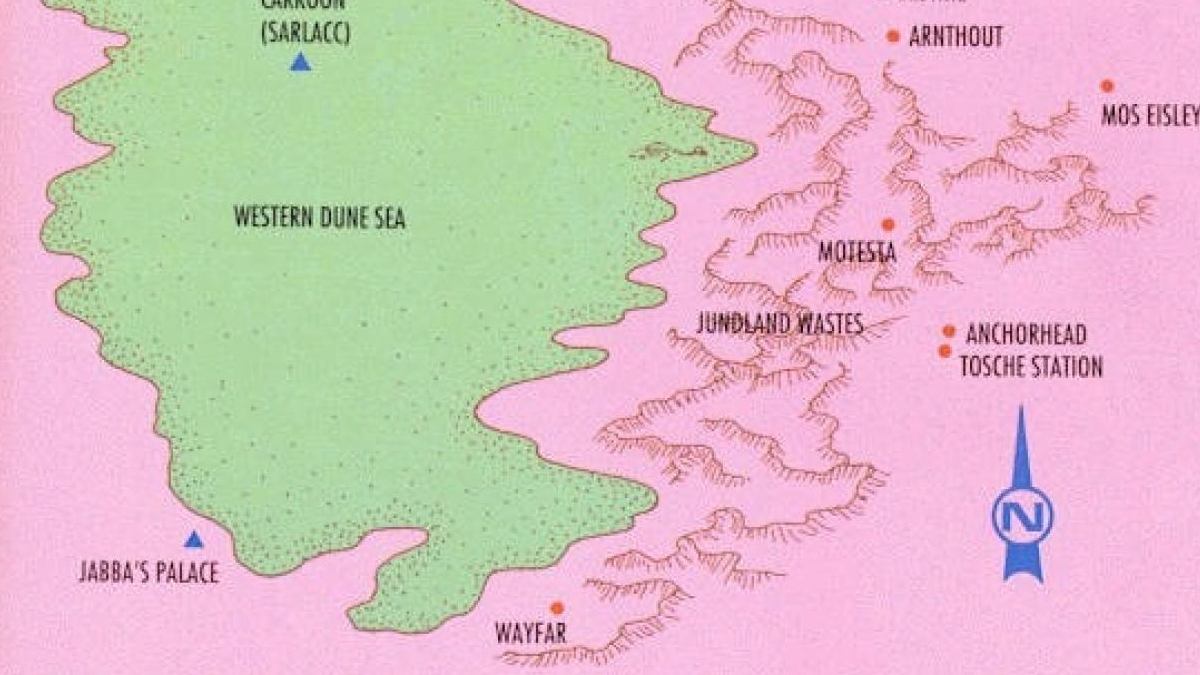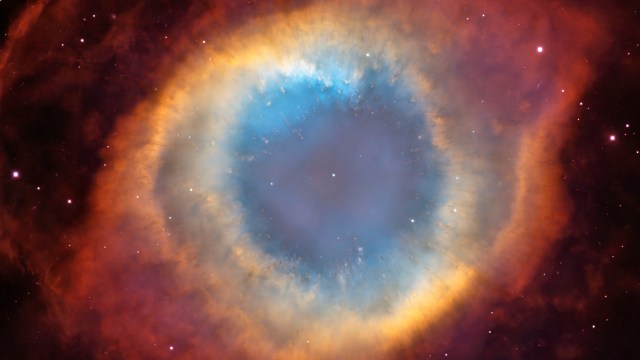The messianic movements that inspired “Dune”

- Frank Herbert’s “Dune” contains themes of messianism that are striking similar to historical religious movements and prophets.
- The Freman in “Dune” are a downtrodden desert people who hold prophecies and messianic beliefs, just like the people of 1st-century Judea and the Jews who were exiled in Babylon.
- The messianic themes in “Dune” differ from history in key ways, however, namely through Paul’s religious “jihad.”
People behave oddly during hard times. When war, disease, famine, conquest, or natural disaster befall societies, it’s pretty much a sociohistorical rule that there’ll be a rise in apocalyptic and messianic cults. When the Black Death swept across Eurasia and North Africa, it was seen as a divine punishment for humanity’s sinfulness by both Muslims and Christians. Only the faithful were spared. Facing deadly crises, people often turn to puritanism and apocalyptic fanaticism.
That is why the novel and movie Dune is such an accurate account of human nature. The Freman people are desert nomads, grown hard by countless generations of water scarcity, sandstorms, and enforced slavery, similar to the Jews of the Hebrew Bible, the people of 1st-century Judea, or the Arabs of 6th-century Arabia. Through their prophecies and superstitions, the Freman were desperate to find their “Mahdi” — the one who will lead them to paradise.
So how do various messianic traditions compare, and what does Dune get right?
Warning: Spoilers ahead.
The Jewish Messiah
The word “messiah” is of Hebrew origin, meaning simply “the anointed one.” Judaism is generally thought of as a messianic religion, where the hope and belief in a coming savior figure is a central part of Jewish belief and practice. The problem, though, is that who or what constitutes that messiah is ridden with disagreements.
The first issue is that the Hebrew bible does not reference an “end of times” sort of redeemer that we associate with messianism, nor is the word messiah ever used to stand as one like this — it was much more often a literal liberator and breaker of chains. Various documents — such as the Dead Sea Scrolls, the Apocrypha, and the writings of Philo and Josephus — do reference a messiah, but these are infrequent and inconsistent. The problem is that Judaism is largely a temple-based religion, where God alone is the redeemer of Israel (and, afterward, all of humanity). In other words, what’s the point of a messiah if Yahweh can do it?
This changed a bit after the destruction of the Second Temple around 70 CE. As mentioned, in times of chaos, people often turn to apocalyptic and extreme belief, and if the Romans could desecrate and destroy the heart of Judaism, might this mean that a new savior figure was needed? Maybe. But even in the ancient and medieval rabbinic schools that come after, the messiah is present but he’s only of secondary concern — a “nice to have” but not essential to the core tenets of Judaism.
The exception to this came in the 17th-century messianic movement known as “Sabbetaianism.” Sabbatai Zevi was a Jew, born into the Islamic Ottoman Empire, who proclaimed himself as the Jewish messiah when only a teenager. Sabbatai showed signs of bipolar disorder from childhood, and which worsened as he got older. In his occasional manic states, he would openly admit to anti-Halachic and forbidden acts (such as masturbation) and took on the role of a “holy sinner.” In one bizarre episode, he was said to have bought a large fish, dressed it as a baby, and placed it in a cradle. But despite likely going mad, Sabbatai still had great charisma and he continued to attract a devoted following. Even after he eventually converted to Islam (on threat of execution) his followers insisted he was the messiah — many even converted with him.
The Christ
If you were a rich Greek or Roman, Herod the Great was indeed a great king who brought in a relative golden age to an unstable and febrile province of the Roman Empire. He ordered huge building projects and opulent infrastructure improvements, and his tight fist offered the kind of security that tax collectors and traders, alike, loved. However, if you were a Jewish peasant, Herod was something much, much worse. By the end of his reign, the province had been bled dry and its people whipped and worked to bitter exhaustion.
Without an outlet, it was no surprise that when Herod died this resentment came to an explosive head in every district in his realm. Rome restored authority in the way she often did with revolts: brutally and insensitively. Roman officials burned down the temple of Jerusalem, gave power to venal and corrupt priests, and introduced the new “Fiscus Judaicus” — a tax on anyone who wanted to continue practicing Judaism.
All this fed into a 1st-century Judea that was ripe for messianism. The historian, Josephus, noted that the Jews looked avidly to “an ambiguous oracle, (and likewise) found in their sacred scripture, to the effect that one from their country would become ruler of the world.” Meanwhile, the Roman Tacitus observed that people were stubbornly committed to a “mysterious prophecy,” despite all the adversity.
Messiahs popped up everywhere. In the years after Herod’s death, those deemed “the anointed one” were almost always men of common birth, and they came wielding swords. First, there emerged Judas the Galilean, a revolutionary and nationalist leader. Second, there was Simon of Peraea, a former slave of Herod who declared himself king and even managed to burn and loot the royal palace at Jericho. Finally, there was Athronges the Shepherd, who “slew a great many of both of Roman and of the king’s forces.” His rebellion seemed to last two years.
From this messianic fertile ground also emerged the Nazarene son of a carpenter: Jesus (where “Christ” is only the Greek work for messiah). His story is perhaps better known.
The messianism of Dune
So, where does Dune fit into this? How accurate is Frank Herbert’s account of a desert people’s messianism?
First, the geopolitical context is strikingly similar. In Dune, the inhospitable mining planet of Arrakis is a harsh and arid place not unlike the dusty heat of Judea. Likewise, Dune features a central authority in the form of Padishah Emperor Shaddam IV, whose various dukes, barons, and lords serve as “governors” of planets. Baron Vladimir Harkonnen is tasked with overseeing Arrakis like Herod and Pilate were in Judea by the distant Roman emperor.
What’s more, the planet’s native population, the Freman, are downtrodden, abused, and treated like slaves. The planet is drained of resources and exploited, just as Herod did during his reign. The Harkonnen rulers tortured, whipped, and murdered their slaves, and were every bit as brutal and sadistic as Herod. (Herod killed three of his own sons, drowned his brother-in-law, and ordered the murder of all children under age 2 in the city of Jerusalem on the basis of a prophecy.) The Jews and the Freman were similarly oppressed and angry.
Second, both heavily depend on prophecies. Judaism, especially the parts of the Hebrew Bible that were penned while the Jews were in exile in Babylon (Jeremiah, Ezekiel, Daniel, and Esther), is full of prophecies about a coming messiah. For example, Daniel 9 says: “the Anointed One will … destroy the city and the sanctuary. The end will come like a flood: War will continue until the end, and desolations have been decreed.”
Isaiah refers to the “one” who will come to “bind up the broken-hearted, to proclaim freedom for the captives and release from darkness for the prisoners.” In Dune, the Freman have prophecies that Paul goes about satisfying; for example, prophecy holds that the messiah will know the Freman ways “as if born to them.” Paul is tasked with venturing into the desert to subdue a great sandworm — as Jesus did with Satan (the serpent).
Paul is not Jesus
In short, Dune maps almost perfectly onto the messianism that dominated 1st-century Judea. Still, it would be disingenuous to say Dune is simply a science-fiction New Testament.
For one, Herbert is more ambiguous about whether Paul is a messiah in a “god made it so” kind of way. The author mentioned, for example, how the “prophecies” and religious fervor of the Freman were cynically and deliberately planted by the religious-diplomatic order known as the Bene Gesserit. Was Paul’s acceptance of his role as the messiah engineered? What’s more, while it’s possible to read Paul’s mother, Jessica, as a John the Baptist figure, it’s also true that she’s much more reluctant — scared, even — of her son’s burgeoning messianism. She fears the power he will wield, and she even takes steps to prevent his ascendance to the role of Mahdi.
But the biggest difference is that Paul ends up leading a military revolution and violent uprising, which is the very antithesis of Jesus’ ministry. In fact, Jesus was defined by the very fact he wasn’t a David-inspired warrior-king. Rather, he was a “love your neighbor” and “turn the other cheek” kind of messiah. When he was ridiculed as he died on the cross, it’s a far cry from his murderous and revolutionary messianic counterparts like Simon, Judas, and Athronges. In this respect, Paul’s military successes much more mirror Islam’s rise than Christianity’s (and is even referred to as a jihad).
Dune is clever for this. It borrows elements from various religious traditions and histories, but it’s familiar enough to resonate intuitively with most audiences. As such, it’s a wonderful piece of fiction.
Jonny Thomson teaches philosophy in Oxford. He runs a popular Instagram account called Mini Philosophy (@philosophyminis). His first book is Mini Philosophy: A Small Book of Big Ideas.





